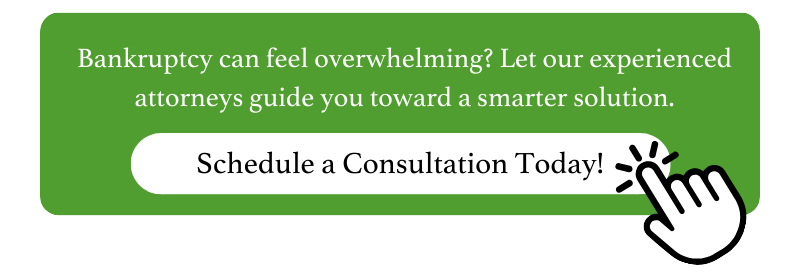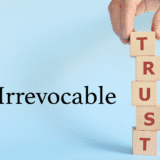Operating a successful business can be a fulfilling experience, but it also comes with financial risks that can be overwhelming. When debt spirals out of control, business owners are often faced with tough decisions, including the possibility of bankruptcy.
In this article, we will delve into the effects of bankruptcy, providing you with a clearer understanding of its implications on your business. We will also address crucial questions surrounding bankruptcy’s impact, empowering you to make informed decisions about your company’s future.
How Bankruptcy Can Impact Your Business
Filing for bankruptcy significantly impacts your business. The specific effects depend on several factors.
These include the type of bankruptcy (Chapter 7, 11, or 13). They also include your business’s legal structure (sole proprietorship, partnership, corporation, LLC) and your financial situation.
Sole Proprietorship
As a sole proprietor, it’s essential to understand that your business and personal finances are legally intertwined. This means that in the event of financial difficulties, your personal assets can be at risk.
The Consequences of Filing for Personal Bankruptcy
Filing for personal Chapter 7 bankruptcy can have severe consequences for your business. In this scenario, your business assets may be sold to repay debts, potentially crippling your business operations.
Alternatively, filing for Chapter 13 bankruptcy allows you to create a repayment plan. However, your business income and expenses will play a significant role in determining your ability to repay debts.
The Lasting Impact on Your Personal Credit History
Bankruptcy can have a long-term impact on your personal credit history, lasting up to 10 years. This can make it more challenging to secure business loans in the future, as lenders may view you as a higher risk.
Partnership
In a partnership, the lines between personal and business assets can become blurred, putting each partner’s personal assets at risk in the event of financial difficulties.
The Difference Between Chapter 7 and Chapter 11 Bankruptcy
The type of bankruptcy filed can have a significant impact on both partners and business operations. Chapter 7 bankruptcy, also known as liquidation, and Chapter 11 bankruptcy, also known as reorganization, have distinct consequences.
Chapter 7 Bankruptcy: Liquidation and Personal Liability
Filing for Chapter 7 bankruptcy means that the business assets will be liquidated to repay debts. However, this does not necessarily mean that partners are absolved of their personal liability. In many cases, partners may still be personally liable for remaining debts even after the bankruptcy case is closed. This can have far-reaching consequences for partners’ personal assets and credit scores.
Chapter 11 Bankruptcy: Reorganization and Ongoing Liability
In contrast, filing for Chapter 11 bankruptcy allows the business to restructure its debt and operations under court supervision. While this can provide a more sustainable solution for the business, partners remain personally liable for certain business liabilities. This means that partners’ personal assets may still be at risk, even after the business has reorganized.
The Long-Term Consequences of Bankruptcy on Future Business Opportunities
Filing for Chapter 7 bankruptcy can have a lasting impact on any future business opportunities you may pursue. A bankruptcy filing can affect your credit score, making it more challenging to secure loans or financing for new ventures. Additionally, a bankruptcy filing can also impact your reputation and credibility as a business owner, making it more difficult to attract investors, partners, or customers.
It’s essential for partners to carefully consider the implications of bankruptcy on their personal and business assets before making a decision. Seeking the advice of a qualified attorney or financial advisor can help navigate the complexities of bankruptcy and minimize the risks.
Corporation or LLC
Corporations and Limited Liability Companies (LLCs) are separate legal entities from their owners, providing a crucial layer of liability protection for owners’ personal assets. This means that, in general, owners’ personal assets are shielded from business debts and liabilities.
Chapter 7 Bankruptcy: Liquidation and Potential Personal Risk
Filing for Chapter 7 bankruptcy typically means that the business will undergo liquidation, and its assets will be sold to repay debts. While the corporate veil provides liability protection, owners may still face personal risk in certain situations:
- Personally guaranteed business debts: If owners have personally guaranteed business debts, they may still be liable for repayment, even after the business files for bankruptcy.
- Specific legal obligations: Owners may be personally responsible for specific legal obligations, such as tax liabilities or environmental damages.
- Financial obligations: Owners may have personal financial obligations, such as loans or credit agreements, that are not discharged in bankruptcy.
Chapter 11 Bankruptcy: Reorganization and Ongoing Operations
Filing for Chapter 11 bankruptcy allows businesses to reorganize and continue operations while restructuring their debt. This process requires creditor and court approval, and the business must develop a plan to repay debts and emerge from bankruptcy.
Ongoing Financial Challenges for Owners
Even with the protection of the corporate veil, owners may still face financial challenges after filing for bankruptcy:
- Personal financial obligations: Owners may still be responsible for personal financial obligations, such as mortgages or car loans.
- Credit score impact: A business bankruptcy filing can still affect an owner’s personal credit score, making it more difficult to secure personal loans or credit.
- Reputation and credibility: A business bankruptcy filing can impact an owner’s reputation and credibility, making it more challenging to attract investors, partners, or customers in the future.
It’s essential for business owners to understand the implications of bankruptcy on their personal assets and financial situation, and to seek professional advice to navigate the complexities of bankruptcy law.
The Automatic Stay and Its Benefits
One of the most significant benefits of filing for bankruptcy is the automatic stay, a legal measure that immediately stops most creditor actions against you or your business. This provision provides a much-needed breathing room, allowing you to regroup and reorganize your finances without the constant pressure of creditor harassment.
What the Automatic Stay Covers
The automatic stay prevents creditors from pursuing various actions, including:
- Collections: Creditors cannot contact you or your business to demand payment.
- Lawsuits: Creditors cannot initiate or continue lawsuits against you or your business.
- Foreclosures: Creditors cannot foreclose on your property or assets.
Exceptions to the Automatic Stay
While the automatic stay provides significant protection, there are some exceptions. Certain actions may continue despite the stay, including:
- Criminal proceedings: Criminal cases against you or your business will not be affected by the automatic stay.
- Tax audits and proceedings: The IRS can continue to audit and pursue tax claims against you or your business.
- Child support and alimony: Obligations related to child support and alimony will not be stayed.
Seeking Expert Legal Guidance
To fully understand the scope of the automatic stay and its application in your specific circumstances, it’s essential to consult a legal expert. A qualified attorney can help you:
- Determine what the automatic stay covers in your case
- Identify any exceptions that may apply
- Ensure that you’re taking full advantage of the protection offered by the automatic stay
Don’t navigate the complexities of bankruptcy law alone. Seek the guidance of a seasoned legal professional to ensure that you’re making the most of the automatic stay and other bankruptcy protections.
Exploring Bankruptcy Chapters for Businesses
The U.S. Bankruptcy Code is comprised of several chapters that address businesses, each with its own unique focus and implications for business owners.
Chapter 7 of the Bankruptcy Code focuses on liquidation, where a business’s assets are sold to repay debts. This chapter has significant implications for business owners, and it’s essential to understand its effects on personal and business assets.
In contrast, Chapter 11 deals with business reorganization, allowing companies to restructure their debt and operations while continuing to operate. This chapter provides a more sustainable solution for businesses, but it also has its own set of complexities and implications for business owners.
To fully comprehend the implications of these chapters, it’s crucial to delve deeper into the specifics of each. Below, we’ll provide a detailed explanation of Chapters 7 and 11, including their differences and how they affect business owners.
| Feature | Chapter 7 | Chapter 11 |
|---|---|---|
| Primary Goal | Liquidating assets to repay debts | Reorganizing the business to continue operations |
| Business Operations | Typically cease | May continue under court supervision |
| Management | Trustee appointed to oversee liquidation | Debtor-in-possession (current management) usually remains in control, but with restrictions |
| Creditors | Receive payment from asset sales | Vote on the reorganization plan; may pursue longer repayment terms |
| Outcome | Business dissolves permanently | Business may continue after successful reorganization or have an organized dissolution |
While bankruptcy can provide a fresh start for businesses, it’s essential to understand that not all debts are dischargeable. Business taxes, penalties, and employee withholding debts are often exempt from discharge, leaving businesses still liable for these obligations.
Selecting the appropriate chapter of bankruptcy (e.g., Chapter 7 or Chapter 11) requires expertise and careful consideration. The wrong choice can have long-term consequences for your business. Debtor education is a critical component of the bankruptcy process, and seeking guidance from a qualified professional can help you make informed decisions.
Seeking Help and Guidance
Before navigating the complexities of bankruptcy, it’s always better to seek help and guidance. Businesses can reach out to organizations such as Bumbaugh | George | Prather| DeDiana for support and resources.
By understanding the intricacies of business bankruptcy and seeking expert guidance, you can make informed decisions about your business’s financial future. Don’t navigate the bankruptcy process alone – seek help and support to ensure the best possible outcome for your business.
FAQs about Bankruptcy
What Happens to My Personal Credit if My Business Files for Bankruptcy?
Business bankruptcy’s impact on personal credit depends on the situation. If you’re a sole proprietor or personally guaranteed business debts, it directly affects your personal credit. With corporations and LLCs, the separation minimizes direct effects. However, potential spillover exists.
Lenders consider both business and personal credit for loans. This makes both filing types important. It helps people get a fresh start after bankruptcy.
Can I Continue to Operate My Business During Bankruptcy?
Whether your business stays open during bankruptcy depends on the chapter and context. In Chapter 7, the business usually closes. A trustee liquidates the assets.
Chapter 11 allows ongoing operations under court supervision, but with restrictions and oversight. The court can appoint a trustee if management doesn’t comply with requirements.
This is rare if reorganization is efficient and cooperative. There may be an opportunity to extend the pay terms as part of your bankruptcy filing.
What are the Alternatives to Bankruptcy for a Struggling Business?
Alternatives like debt consolidation and out-of-court settlements should be explored before bankruptcy. These involve negotiating repayment plan adjustments.
Asset sales can reduce debt or secure funding. Businesses may consider a formal or informal assignment for the benefit of creditors. Not all creditors need to agree, unlike in bankruptcy proceedings.
Conclusion
Bankruptcy’s effects on businesses vary due to chapters, business structures, and operational specifics. It can lead to closure (Chapter 7) or reorganization (Chapter 11) to preserve the business.
The automatic stay provides time to recover and assess challenges. Working with legal experts clarifies the process. Bankruptcy court helps businesses to overcome their financial problems and provide a legal framework for businesses.









